During my years of construction, we would often be holding panes of glass in sunlight while installing them. One of the strange things I would notice is the transparent nature of glass and the irony in glass casting a shadow. Does glass have a shadow?
Glass has a shadow because of refraction. Photons that hit glass travel at a different speed than the ones that pass through air. They can also change direction if they hit glass at an angle. This dims the light that goes through glass, casting a transparent shadow.
In this article, I will explore this phenomenon further and discuss the different factors that affect the shadow cast by glass. You will also learn three facts about glass that most people don’t know. Towards the end, this post covers light, glass, and color but to get there; we have to establish a clear understanding of light, glass, and shadows, starting with the query below.
Table of Contents
- 1 Why Does Glass Have A Shadow?
- 2 What Factors Affect The Shadow Of The Glass
- 3 Can Glass Be So Thin That It Casts No Shadow?
- 4 Glass Trivia: What Else Didn’t You Know
- 5 Why Can You Sometimes See Yourself In Glass?
- 6 Colored Glass And Light
- 7 Glass, Light, and Heat
- 8 Natural Glass and light.
- 9 Final Thoughts – Does Glass Have A Shadow?
- 10 Hot Glass vs Cold Glass – What’s The Difference?
- 11 Can Quartz Be Made Into Glass? Guide On Quartz & Glass
- 12 What Is Panda Glass | Ultimate Guide To Panda Glass
Why Does Glass Have A Shadow?
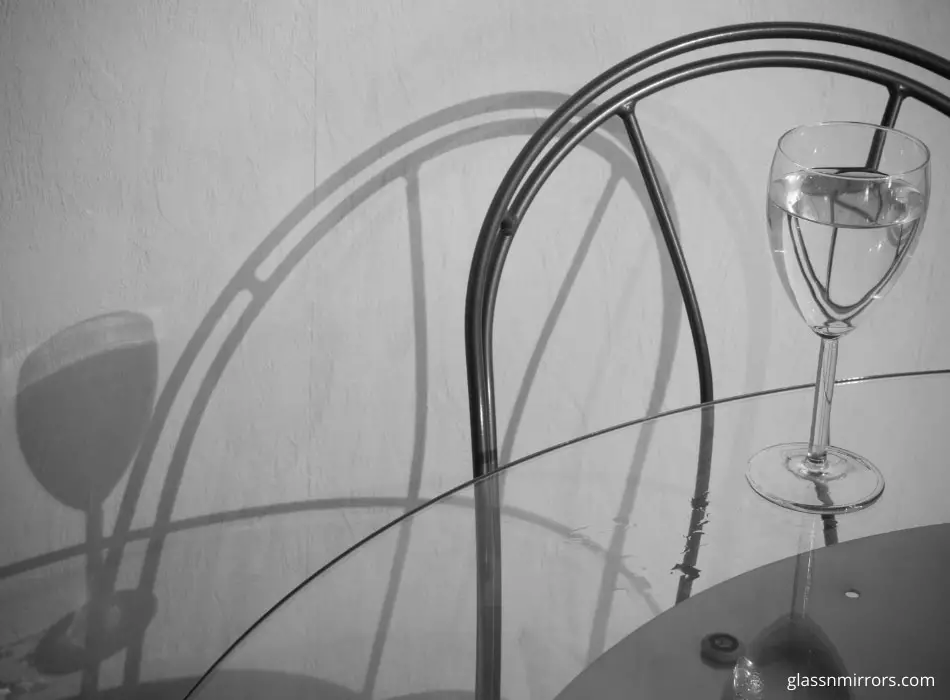
Glass has a shadow because, at any given moment, fewer photons reach the ground passing through glass compared to the ones that pass through the air around the glass. That’s why windows do not cast a shadow on the inside, they cast a spotlight because light passes through the glass, but there’s no light passing quicker around the windows to create a brighter region around the spotlight.
100% of the light that hits glass goes through it. But since it is slower and the light that passes around the glass can be quicker, the ground is brightly lit while the “spotlight” created by the glass is dimmer. This dim region is a glass’s shadow. If the area around the glass slows downlight more, the glass will not seem to cast a shadow.
What Factors Affect The Shadow Of The Glass
Aside from the light permeability around the glass, there are three other factors that dictate the extent to which the shadow cast by glass is noticeable, starting with the density of the glass sample.
The thickness of the glass
Since the shadow results from photons slowing down as they travel through glass, the thicker a layer of glass, the more noticeable its shadow is. The inverse is true as well; if the glass is thin, it casts a barely noticeable shadow.
Where the glass is located
It is evident that light has to hit the glass for the glass to have a shadow, but the angle at which light hits the surface is also important. As covered earlier, shadows that are cast by translucent objects depend on refraction, a process that involves the slowing of photons or redirection of light. The shadow cast by bending light is much more evident than the one cast when light hits glass perpendicularly.
The color of the ground
Finally, the shadow cast by glass is barely noticeable and requires the ground to be either lighter in color. Grey, black, and brown surfaces do not register a glass’s shadow. This has less to do with how glass interacts with light and more to do with how the eye detects shadows.
Because the human eye depends on contrast to register objects, the lack of sufficient contrast makes the shadow barely visible.
Can Glass Be So Thin That It Casts No Shadow?
Glass cannot be so thin it casts no shadow because for the glass to have no shadow, it must be as permeable to light as air, which would make said glass invisible to the human eye.
Such glass has not yet been manufactured. That said, windows don’t cast a shadow inside a room.
This has less to do with the thickness of the window and more with the opaqueness of the frame and the surrounding area. Since light’s shadow isn’t opaque, you don’t notice it unless there’s brighter light around it. In other words, glass might not be too thin to cast a shadow, but it can be perfectly positioned to cast no shadow regardless of its thickness.
Glass cracks travel at 3,000 Miles per hour!
Glass Trivia: What Else Didn’t You Know
If you think it is strange that glass can seem transparent yet cast a shadow, wait until you find out that it isn’t solid! Here are three things that most people don’t know about glass.
- Glass is a super-cooled liquid – Glass is not a solid. It cures into a solid form but is a liquid that is cooled to a relatively stable state where it stays in shape unless exposed to extreme heat. Some components of glass liquify quicker than others.
- Glass is made from sand – If you’ve ever wondered where glass comes from, you should frequent the beach. Sand is made of nearly microscopic crystals, and when these crystals are melted at a very high temperature, they lose the surface area that makes them opaque and turns them into glass.
- Cracks in glass travel faster than a Concorde plane – Concorde is the fastest recorded plane in aviation history. Yet when a glass shatters, the cracks travel at 3,000 miles per hour, which is more than double the Concorde’s average speed of 1,354 miles per hour. No wonder a large slab of glass can shatter in the blink of an eye.
Why Can You Sometimes See Yourself In Glass?
Now that we’ve covered some of the trivia around glass, let’s circle back to the interaction between light and glass. By now, you know that glass is not 100% transparent. As much is evident by the fact that it casts a shadow. But light doesn’t refract only when it hits a glass panel; it can reflect as well.
You can sometimes see yourself in glass because a portion of the photons that hit the glass are reflected back. When this happens, the light that has hit you first returns to you, albeit much dimmer, allowing you to see a hint of your own reflection.
To turn glass into a mirror, one side of the glass needs to be coated in a highly reflective material that ensures that close to 100% of the photons that hit a mirror are reflected back. Usually, aluminum is used for this purpose, but even silver can be used to have the same effect, except at a higher cost.
This phenomenon is also responsible for the phone screen being black when turned off. Even though the phone screen is made of glass, it has such opaque backing that it cannot let any light pass through. As a consequence, you see your own face when the screen is switched off. When the phone is turned on, there’s such an intense light comes out of the screen that the light that hits the screen loses becomes too weak to notice.
Pulling out a phone screen from your smartphone’s frame or taking an actual mirror and putting it in the sun, you’ll notice something: the shadow cast by the front and the back of the mirror is exactly the same. Mirrors cast a much darker shadow than glass because 100% of the light that hits the mirror glass gets reflected back.
This shows that since reflection and show intensity is directly correlated, glass panels that reflect more also have more prominent shadows. In contrast, glass that doesn’t reflect much light has a barely noticeable shadow.
It isn’t strange that glass can cast a shadow when turned opaque. What some find fascinating, though, is that glass comes from an otherwise opaque material. Sand and crystals are used to make glass. An individual grain of sand isn’t actually opaque; it just has a high surface area that creates grain boundaries by refracting light.
When the same sand is molten at a high temperature, the resulting liquid, glass, loses the previous grain boundaries and becomes functionally transparent. Of course, it has to be cooled to be in the state where it can be held. Still, the rule of boundaries applies. Glass is the most obvious at the boundary, which is why a glass plane that extends to the entirety of a swimming pool is nearly invisible.
Colored Glass And Light
By now, you understand that glass can let light pass slower than air, resulting in a shadow. You also know that some of the light that hits a glass surface can be reflected back. This might make you wonder if partial reflection is responsible for colored glass. That’s not the case.
Glass has to be impure in order to have color. Usually, it is the addition of minerals at the production stage that results in colored glass. Sometimes, a standard glass panel is covered by a colored sheet. Similar sheets are used to blackout the windows of a car. This is a cheaper way to produce colored glass compared to adding minerals.
The reason why standard glass’s reflection doesn’t produce colored glass is that it reflects a small portion of light but within the reflected wave are all the colors that are initially present in the light. With the addition of minerals, a bulk of the light gets retained, and only a few wavelengths pass, resulting in a specific, often unpredictable, color.
This results in a colorful spotlight on an appropriately contrasting surface. In other words, the shadow cast by the colored glass can have color if the light passing through is bright enough, and the surface on which the shadow is cast is white. Just like a regular glass panel dims, light-colored glass dims the only light waves that pass through it.
Glass, Light, and Heat
Light waves don’t pass without heating up a surface, which means that while glass has an effect on light, light has an effect on it too. The heat from sunlight can sometimes warp glass, liquifying some of the solidified elements. This can cause the cone phenomenon where the top area of a glass panel becomes thinner while the glass inside liquifies and drops into the foundation leading to a thicker base. From afar, the glass looks like an upside-down cone.
Uses of glass that involve light must all factor the heat aspect in. Here are a few things to consider when you use glass in any light-associated context.
- Don’t make it airtight – If you have glass windows, crack them open just a little. This is relevant for smaller spaces like cars because the build-up of heat in the car’s interior can affect the glass’s consistency.
- Do not place glass perpendicular to your line of sight – Glass can produce glare and seriously damage one’s vision with extended exposure. Whenever possible, try to have the glass facing you instead of being at a 90-degree angle from your line of vision.
- Opt for sunglasses that provide UV protection – One of the advantages of glass reflecting some of the light waves back is that it can be customized to hold back UV rays. From blue light filter glasses to UV-protection shades, plenty of options are available to protect your eyes from harmful UV rays.
Do mirrors reflect UV light? I explain this fully in this article.
Natural Glass and light.
Having discussed how glass can be formed by melting sand and how it can be customized to retain a bulk of light waves and even protect one from UV rays, it is reasonable to wonder if glass is naturally occurring. After all, the process of melting sand cannot be absent in nature.
Glass can be naturally made when lightning hits sand or when high-silica rocks are molten by lava and are cooled with time. This glass often has more prominent shadows as it doesn’t form in as thin a layer as can be blown artificially. Some objet d’art and decor pieces feature natural glass but a bulk of the glass present today is man-made.
Final Thoughts – Does Glass Have A Shadow?
Glass is a fascinating material that can be a source of a thousand shower thoughts. It is the closest thing we have to a truly transparent object, with water being the other option.
Still, it slows down light just enough to dim the resulting spot on the ground. In the presence of brighter light around said spot, what the glass casts is considered a shadow. But in the absence of surrounding light, glass doesn’t cast a shadow. It just produces a spotlight.
-
Hot Glass vs Cold Glass – What’s The Difference?
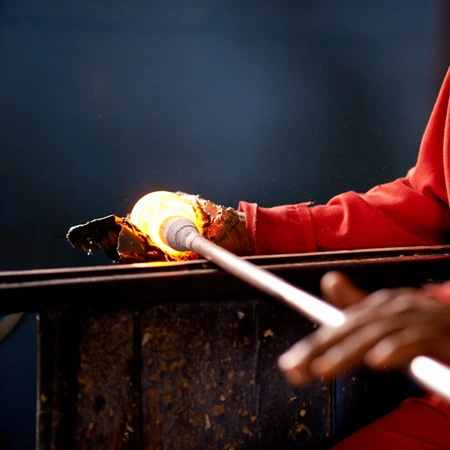
When most people think of glass, they probably think of windows or drinking glasses. But there is a lot more to glass than that. In fact, there are two main … Keep Reading
-
Can Quartz Be Made Into Glass? Guide On Quartz & Glass
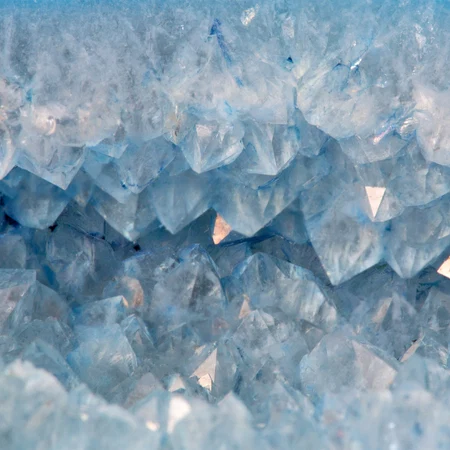
Glass making is a process that involves heating and cooling sand and other minerals. You may wonder whether it is possible to make glass out of quartz. Glass is made … Keep Reading
-
What Is Panda Glass | Ultimate Guide To Panda Glass
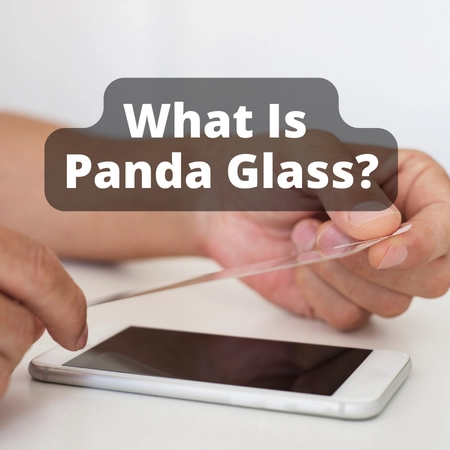
When looking for a new phone case, you may have encountered the term “panda glass.” A variety of phone cases on the market use this type of glass. But what … Keep Reading
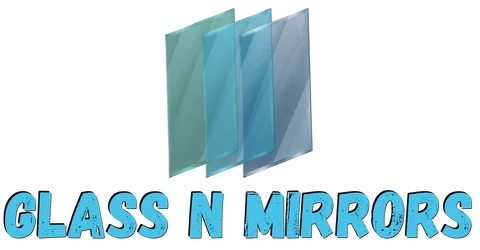
1 thought on “Ever Wonder Why Glass Has A Shadow?”
Comments are closed.